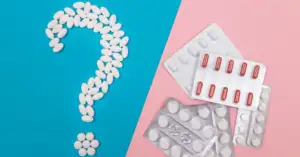Generic products are canopies on the original innovator brands available once the patent of the innovators ceases to exist. Generic medicinal products need to prove themselves of being bioequivalent to the original brand for making themselves available in the market. They are identical to their branded equivalents in terms of active components, dosage form, potency, method of administration, and intended use and therefore also referred as <<Generic Copies>>. The primary distinction is that generic drugs are often released after the brand-name drug’s patent protection has run out and are priced less compared to the original brand and are made more affordable for the general public who lack social security and medical reimbursements. Essential healthcare services and life-saving medications are inaccessible in half of the world’s nations. The top two nations for innovator drug development are the United States and European nations. According to “The Organisation for Economic Co-operation and Development,” in recent decades, innovative medicines have changed the natural history of diseases like HIV and some cancers in addition to improving survival rates and quality of life for many patients from developed and high income countries. However, many low- and middle- income countries cannot afford the innovator medicines and are deprived from the treatment.
Here are some examples of Lower and middle-income countries (LMICs). :
| Regions | Nations |
| Sub-Saharan Africa | Nigeria, Ethiopia, Kenya, Tanzania, Uganda, Ghana, Democratic Republic of Congo, Mozambique, Angola, Zambia |
| South Asia | India, Bangladesh, Pakistan, Sri Lanka, Nepal |
| Southeast Asia | Indonesia, Philippines, Vietnam, Thailand, Myanmar (Burma), Cambodia, Laos |
| Latin America | Mexico, Brazil, Colombia, Argentina, Peru, Ecuador, Bolivia, Paraguay, Guatemala |
| Middle East and North Africa | Egypt, Morocco, Algeria, Tunisia, Iran, Jordan, Lebanon |
| East Asia and Pacific | China, Indonesia, Vietnam, Philippines, Thailand, Malaysia, Papua New Guinea, Mongolia |
These countries do not have social security or medical reimbursement provided for the citizens. They have public hospitals for free and/ or discounted treatment for the patients. However, public hospitals cannot buy expensive medicines and prefer generic copies that are economically viable for a large number of patient populations. All these countries are also highly populated. Due to limited financial resources and high healthcare expenses, these countries frequently confront considerable obstacles in providing healthcare services to their inhabitants. Here are some examples of how generic medicine affects low and middle-income countries:
- Expanded availability of vital drugs: Generic drugs are frequently created to treat common illnesses and health issues that are prevalent in low- and middle-income nations, including malaria, tuberculosis, HIV/AIDS, and a number of non-communicable diseases. These drugs, which are essential for public health initiatives, can be produced, distributed, and purchased in large quantities using generic versions at a discounted price.
- Affordability: Since there are no expenditures associated with research, development, and marketing, generic drugs are much less expensive than their branded counterparts. For patients who might not be able to buy pricey branded prescriptions, this makes them more accessible and more affordable. Low-income individuals and families can thus manage healthcare costs for their family members.
- International assistance and partnerships: To ensure that generic medications are accessible in lower- and middle-income nations, international organisations, governments, and non-governmental organisations (NGOs) frequently work together. To facilitate local production and distribution of generic drugs, these agreements may involve knowledge transfer, capacity building, and financial support.
- Strengthening of the healthcare system: The availability of reasonably priced generic medications aids in the general improvement of the healthcare systems in lower- and middle-income nations. Saving money on prescription drugs frees up funds that can be used to expand healthcare services, upgrade the healthcare system, and train more healthcare personnel. This helps to create a healthcare system that is more resilient and long-lasting.
- Supply chain reliability is increased by the availability of generic drugs, which are either produced locally or imported at reduced prices. This increases the accessibility and availability of necessary medications in rural locations where the infrastructure for providing healthcare may be lacking. Local generic drug development also aids in increasing domestic pharmaceutical production capability and lowering dependence on imports.
In conclusion, generic drugs have a significant impact on the healthcare economics of the low- and middle-income countries. They increase patient access to low-cost pharmaceuticals, broaden the scope of available medical care, cut healthcare costs, boost domestic pharmaceutical companies, and aid in the prevention and control of epidemics and contagious illnesses. For maintaining fair healthcare delivery and tackling the healthcare difficulties encountered by these countries, generic medicine accessibility and cost are essential.





